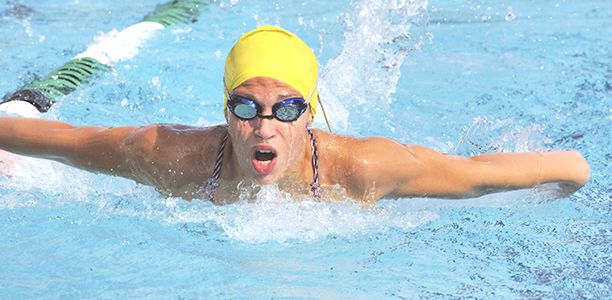Fifteen year-old Marshall Hastings is living proof of the value of having life-saving cardiac defibrillators and trained personnel at sporting events.
On a warm spring evening in 2009, he was leading a 50m race at a zone swimming carnival in suburban Sydney when he suddenly stopped and sank to the pool’s bottom.
Leaping from her seat, Marshall’s mother, Annmaree Hastings, sprinted to the poolside as she called to startled onlookers to drag her son’s inert body from the pool.
“Call it a mother’s instinct, but right away I knew something awful had happened to Marshall,” says Annmaree, recalling the event.
By the time her nine year-old son was hoisted to the pool deck he was lifeless – he had no detectable pulse, and had stopped breathing.
Fortunately, the Botany Aquatic Centre hosting the carnival had a defibrillator on hand – a device that can diagnoses life-threatening cardiac arrhythmia and deliver a shock enabling the heart to re-establish its normal rhythm.
Better still, the centre had trained staff capable of using a defibrillator and administering cardiopulmonary resuscitation.
A print-out from the defibrillator later showed Marshall’s heart hadn’t stopped, but was racing at more than 300 beats per minute – so fast, it couldn’t be detected manually.
Marshall’s heart stopped and started several times that night as pool staff, ambulance paramedics, and then emergency physicians and cardiologists at Sydney Children’s Hospital fought to save his life.
Today, Marshall and Annmaree are patients of Professor Chris Semsarian, a cardiologist whose research at the University of Sydney is revealing the secrets of inherited heart disorders and sudden death.
Both Marshall and his mum have an inherited gene mutation, known to cause CPVT. It causes the heart to be electrically unstable under stress conditions, and prone to developing an abnormally rapid rhythm called ventricular tachycardia.
“People with CPVT can develop a dangerous heart arrhythmia initiated by the release of adrenaline during physical exertion,” says Chris Semsarian.
“This dangerous arrhythmia triggers a heartbeat before the ventricles have fully recovered from the previous beat. When this occurs, the heart muscle begins to quiver, and can’t contract effectively.
“If it doesn’t self-correct, blood may not be effectively pumped around the body, which can lead to dizziness and rapid loss of consciousness. Without immediate emergency treatment and the use of a defibrillator, death follows within minutes.”
Sudden cardiac death is the first sign of CPVT in up to 50% of cases. The disease is one of 40 or so cardiac disorders with a genetic origin that dramatically raises the risk of sudden cardiac death in otherwise healthy people.
Today, Marshall and Annmaree Hastings each have a surgically implanted cardioverter defibrillator that monitors their heart rhythms. The devices are capable of delivering an electric shock if their heart rate or rhythm should suddenly become abnormal.
“Chris is a lifesaver,” says Annmaree Hastings. “When we discovered that Marshall’s ordeal stemmed from an undiagnosed disorder with a genetic origin, Chis advised the whole family to be genetically tested. Without his counsel, I would have been a walking time bomb.”
Chris Semsarian says are three main ways to help prevent sudden heart death in fit, young athletes like Marshall, who is now an elite soccer player:
- Raise awareness – anyone who has had blackouts during exercise or with a family history of genetic heart disorder may be at high risk of sudden cardiac death. These people should see their GP to discuss a screening test
- Teach CPR in schools, sports clubs, workplaces and community settings
- Increasing the availability of defibrillators and people trained to use them in schools, sports clubs and community venues.
(Source: The University of Sydney)










